Cosmos plants are easy to spot with their tall, slender stems and feathery green leaves that give them a light, airy look. The flowers themselves are quite showy, resembling daisies with a central eye and a ring of long, colourful petals around it.

Cosmos plants are originally from Mexico. There are over 20 different types, but the ones you usually see in gardens are called cosmos bipinnatus and cosmos sulphureus. A long time ago, Spanish explorers took these bright and pretty flowers from Mexico to Europe and other places, and now lots of people love to have them in their gardens.
The name comes from the Greek term – ‘cosmos’ – for order and harmony. The name likely refers to the plant’s petals and their symmetrical, orderly arrangement, which reflects a sense of balance and beauty in the universe.
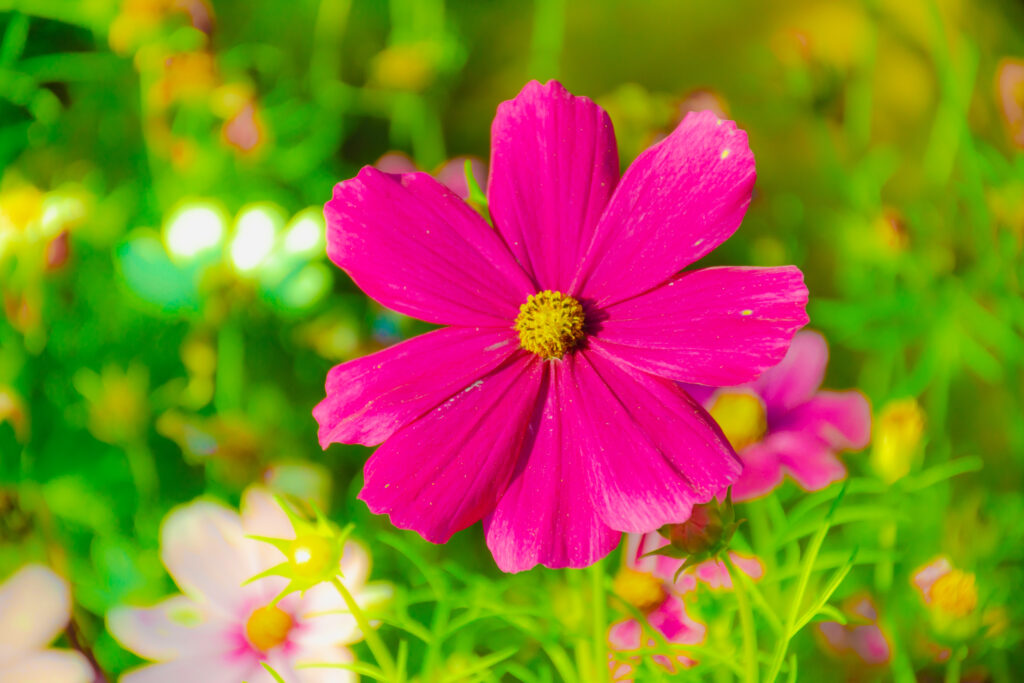
Why grow cosmos?
Cosmos plants offer long-lasting summer colour, blooming from midsummer right through to the first frosts, providing a vibrant display for many months. They have a sort of wildflower charm that can make any outdoor space look more cheerful and inviting.
They come in a variety of shades like pink, white, red, and yellow, adding a pop of colour to any sunny space in your garden. The blooms are large and make for a striking display that can brighten up any area, even if you’re not familiar with gardening. Besides looking good, they’re also great for wildlife, attracting pollinators like bees and butterflies.
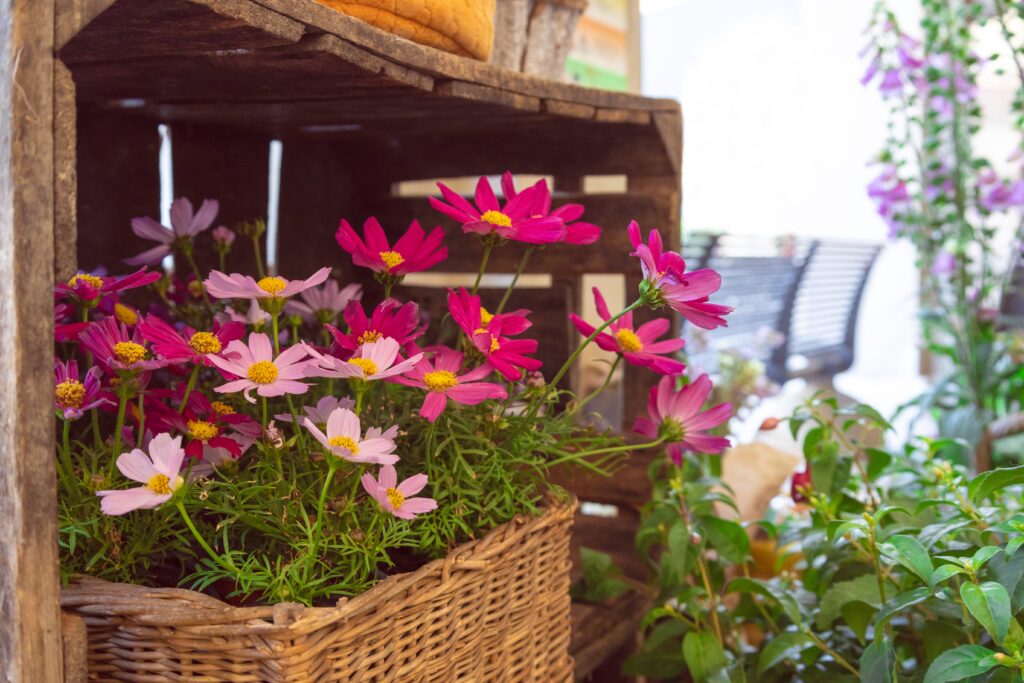
Cosmos plants are a breeze to grow, even for beginners. They don’t need much attention, so they’re perfect if you want to spruce up your outdoor space with some pretty flowers that’ll keep blooming without much effort from you. They can also self-seed, which means you might even find them popping up naturally in the years that follow.
How to grow cosmos
Growing cosmos from seed is very straightforward. You can sow cosmos seeds directly into the garden once the danger of frost has passed. Simply scatter the seeds onto a well-prepared bed, lightly cover them with soil and water them in.
If you want a head start, sow seeds indoors 4 to 5 weeks before the last expected frost.
Use plug trays or small pots with seeding compost, lightly covering the seeds. Keep the soil moist and provide plenty of light.
Whether sown indoors or outdoors, you’ll probably need to thin out the seedlings once they’re a few inches tall. Depending on the variety, each plant might need around 30 centimetres to give it enough space to grow.
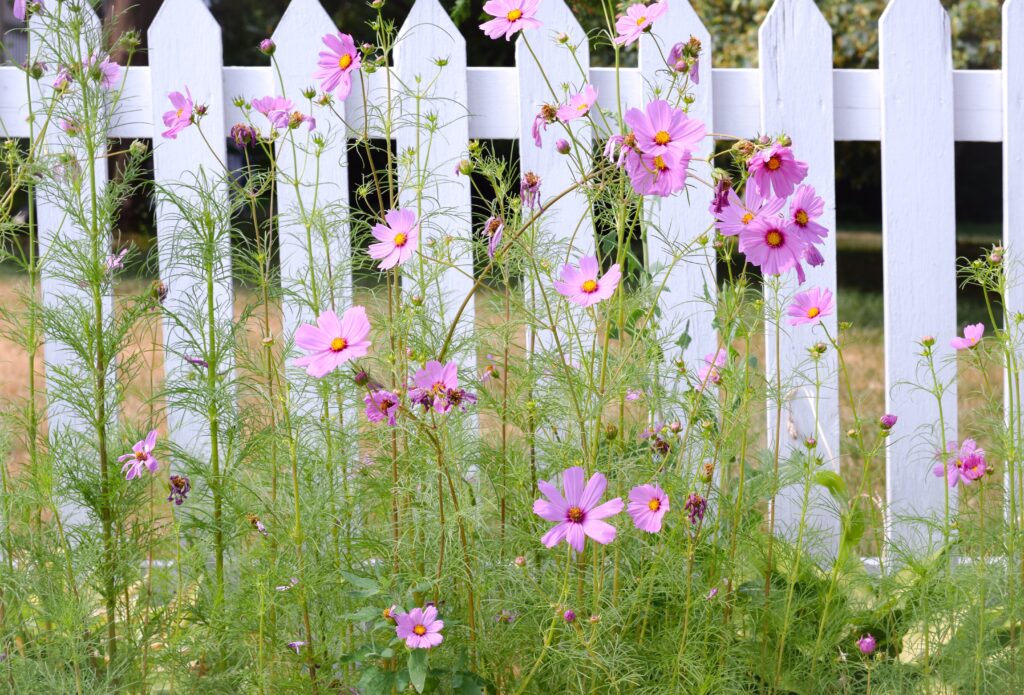
Once established, cosmos are pretty drought-tolerant. They prefer full sun and will bloom from summer to frost. Remember, that cosmos thrive in poor to average soil and don’t usually need feeding – in fact, over-fertilising can lead to fewer blooms.
Which types of cosmos should I grow?
With over 20 types of cosmos to try, you might be wondering which ones to start with.
Here are 3 popular varieties, perfect for a UK garden…
Cosmos bipinnatus ‘Purity’: This variety is cherished for its pure white flowers that provide a fresh, clean look in the garden. It’s a classic choice that pairs well with any other plant.
Cosmos ‘Sensation Mixed’: Known for its large, colourful blooms in shades of pink, white, and carmine, this variety has a traditional daisy-like appearance with a yellow centre and is perfect for creating a vibrant display.
Cosmos sulphureus ‘Bright Lights’: This variety stands out with its fiery shades of yellow, orange, and red. It’s a more compact version of cosmos that adds a warm, sunny burst of colour to any garden setting.
Whichever cosmos you go for, tell us all about it in the comments!

3 interesting facts about cosmos
- Cosmos is native to Mexico and was discovered by Spanish explorers years ago before being introduced to Europe and other areas.
- The name “cosmos” for these plants is derived from a Greek word that means ‘order’ and ‘harmony.’ This likely points to how the plant’s petals are neatly arranged in a balanced and symmetrical pattern, giving off a vibe of orderly beauty that mirrors the harmony of the universe.
- Chocolate Scent: One unique variety, the Chocolate Cosmos (Cosmos atrosanguineus), is famous for its rich, velvety brown flowers that have a delightful fragrance reminiscent of chocolate, making it a treat for both the eyes and the nose.
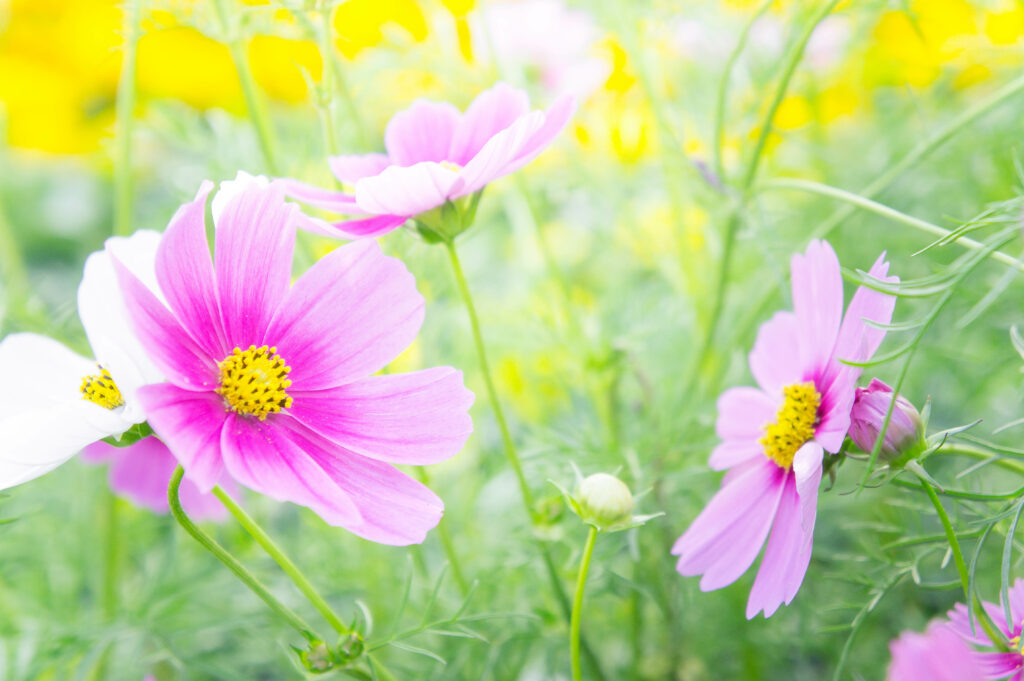
Frequently asked questions about cosmos
Are cosmos flowers grown as annuals or perennials in the UK?
In the UK, cosmos flowers are typically grown as annuals. Most varieties of cosmos are not hardy enough to survive the cold winter temperatures in the UK, so they are planted anew each spring. Gardeners in the UK can sow cosmos seeds directly into the ground after the last frost has passed or start them indoors and then transplant them outside once the weather is suitable.
What do cosmos flowers symbolise?
Cosmos flowers symbolise balance and harmony and are the birth flower for the month of October. They are also associated with order, peace, and serenity.
Are cosmos flowers easy to grow?
Cosmos are known for their low maintenance. They can thrive in poor soil conditions and do not require a lot of water. They are also known to self-sow, meaning they can reseed themselves year after year, providing a long-lasting presence in your garden with minimal effort.
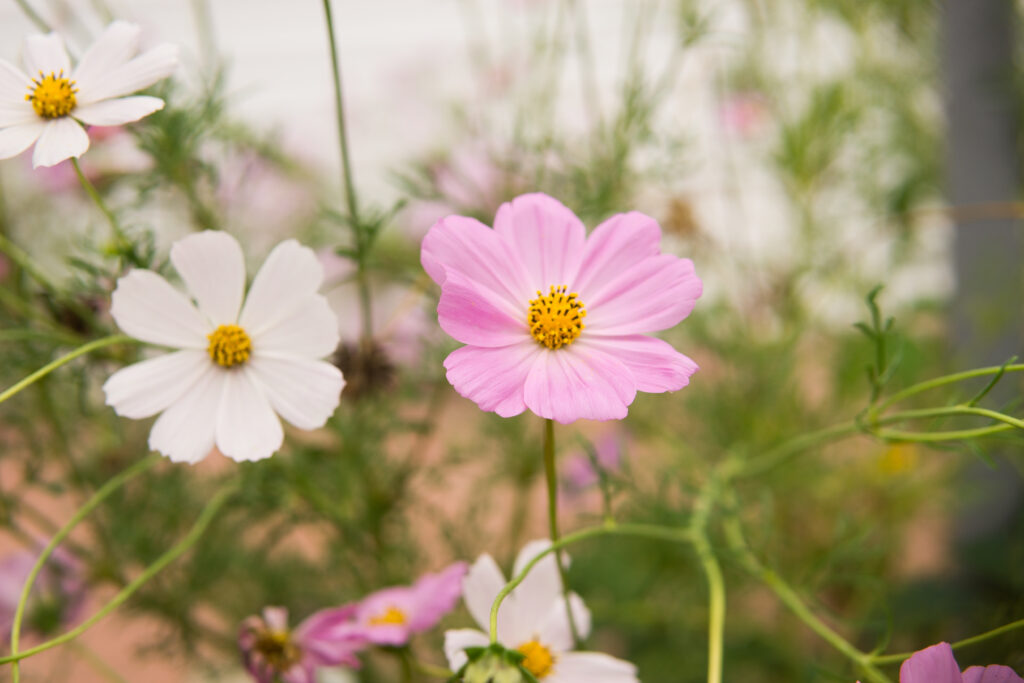
What are common problems when growing cosmos?
While cosmos are generally easy to grow and maintain, they can sometimes become tall and spindly if not provided with enough light. It’s normal for them to start thin, but they should fill out as they grow. Ensuring they have full sunlight and are not overcrowded can help prevent this issue.
Are cosmos flowers edible?
Some cosmos flowers – namely, cosmos sulphureus flowers are known to be edible, and their vibrant orange and yellow petals can be used to add colour to salads and other dishes. However, not all cosmos species are considered edible, so it is very important to always verify the species before consumption – please be careful!
Can I grow cosmos in pots or containers?
Yes, you can grow cosmos in pots or containers, but it’s important to ensure they have a moist but well-draining growing medium and are placed in a sunny location. Containers should be deep enough to accommodate the roots, with a recommended depth of at least 12 inches, and equally wide or wider to give the plants enough space to grow. Dwarf or compact varieties are particularly suitable for container growing due to their smaller size.
Got any questions about cosmos? Why not ask in the comments and let’s start the conversation!
